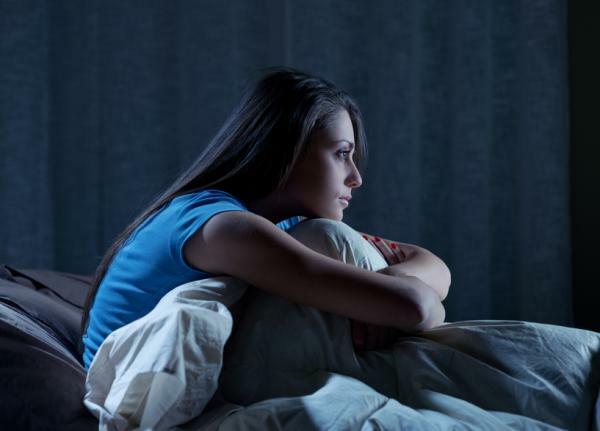
Sometimes our son or daughter may be sad or nervous when we move away. In a way it is normal, we are a very important figure for the little one, by our side he feels that everything is going well, but an excessively dependent bond is never good. When this restlessness transforms into strong fits and tantrums, we may find ourselves with the appearance of a Separation Anxiety Disorder.
It is very important to detect these types of behaviors to treat them in time and prevent the little one from worsening and aggravating his disorder. If you want to know more about the Separation Anxiety Disorder in children: symptoms and treatmentWe invite you to continue reading this Psychology-Online article.
Index
- What is Separation Anxiety Disorder?: Signs and Symptoms
- DSM V Criteria for Separation Anxiety Disorder
- Causes of Separation Anxiety Disorder in Children
- Consequences of separation anxiety disorder in children
- Treatment of Separation Anxiety Disorder in Children
What is Separation Anxiety Disorder?: Signs and symptoms.
This disorder is characterized by a strong negative response to the idea of separating from an emotionally important person, either for a brief moment or for a season. This response is defined by excessive feelings of anxiety, stress and anguish. In addition, various physical symptoms such as agitation, tachycardia, and nausea.
Separation Anxiety Disorder in Adults
We understand that, as a general rule, this disorder only occurs in children, but that is not true. Separation Anxiety Disorder (SAD) occurs in adults with symptoms that are very similar to those of the youngest, in fact, it can have its onset after 18 years of age. Although the symptoms may be very similar, they contrast more with the behaviors that are established for their age and, therefore, seem more serious symptoms.
Separation Anxiety Disorder in Children
This problem tends to affect children more. In addition, it is also given more importance because in them the treatment is simpler and the cure is somewhat more viable. The child with SAD often suffers from excessive fear and anxiety when she knows that a attachment figure is going to get away from him. It's important to know differentiate a little nerves (on the first day of class or an excursion) of what is the disorder itself, from the child's inability and irrational fear of being alone. For that reason, several diagnostic criteria have been developed.
DSM V Criteria for Separation Anxiety Disorder.
The DSM V is a manual that collects the symptoms and the diagnosis of the different mental pathologies, this same manual defines the following criteria for diagnosing SAD1:
TO:Excessive and inappropriate fear or anxiety for the level of development of the individual concerning his separation from those for whom he feels attached, as evidenced by at least three of the following circumstances:
- Excessive and recurrent discomfort when a separation from home or from the most attached figures is anticipated or experienced.
- Excessive and persistent worry about the possible loss of the most attached figures or that they may suffer possible harm, such as illness, injury, calamities or death.
- Excessive and persistent worry about the possibility that an adverse event (p. eg, getting lost, being kidnapped, having an accident, getting sick ...) causes the separation of a figure of great attachment.
- Persistent resistance or refusal to go far from home, school, work, or elsewhere for fear of separation.
- Excessive and persistent fear or resistance to being alone or without the most attached figures at home or elsewhere.
- Persistent resistance or refusal to sleep away from home or to sleep without being near a highly attached figure.
- Repeated nightmares on the subject of separation.
- Repeated complaints of physical symptoms (eg. g., headache, stomach pain, nausea, vomiting ...) when the separation of the most attached figures occurs or is anticipated.
B: Fear, anxiety, or avoidance is persistent, lasts at least four weeks in children and adolescents and typically six or more months in adults.
C: The alteration causes clinically significant discomfort or impairment in the social, academic, labor or other important areas of the functioning.
D: Alteration not better explained by another mental disorder, such as refusal to leave home due to excessive resistance to change in a autism spectrum disorder; delusions or hallucinations concerning separation in psychotic disorders; refusal to go out without someone you trust in agoraphobia; concern about unhealthy health or other harm that may happen to close relatives or significant others in generalized anxiety disorder; or worry about having a disease in illness anxiety disorder.

Causes of Separation Anxiety Disorder in Children.
Like many other mental pathologies, SAD has a multifactorial origin, that is, there are several risk factors that can precipitate a child to suffer from this disorder:
- Temperament: several studies show that a more shy and insecure you are more likely to develop this disorder. Probably, given the latent insecurity, they need constant external reinforcement.
- Anxiety regulation strategies: a child who doesn't know how to handle her anxiety will get carried away with it. Also, thinking that something is uncontrollable increases the child's insecurity and feeds Separation Anxiety Disorder.
- Managing emotions: In the same way that controlling anxiety can prevent the appearance of SAD, managing emotions helps the disorder not get worse. At times, the child may become very afraid and anguished at the idea of separating from their parents or from loved one, but the key is to manage the distress in the best possible way to prevent those feelings from aggravate.
- Neurological factors: Several experiments have been conducted to establish a relationship between neurotransmitters and emotions. In this particular case, between some hormones and Separation Anxiety Disorder. The results show that a poor regulation of norepinephrine (a hormone of the nervous system) is related to the appearance of anxiety in children and adults.
Consequences of separation anxiety disorder in children.
If we do not treat this disorder correctly, over the years it can lead to other types of mental ailments such as social phobia or others conduct disorders. The high levels of stress to which the little one is subjected can cause important consequences in their cognitive system:
- Generalized anxiety
- Social phobia
- Paranoid ideas
- School dropout
- Addictions to other substances
- Maintenance of the disorder in adulthood
- Toxic and dependent relationships
In general, SAD greatly affects the quality of life of those who suffer it. It is important to analyze the consequences to make people aware of the urgency of treatment in children.

Treatment of Separation Anxiety Disorder in Children.
This disorder can be treated effectively by combining psychological and pharmacological therapy. It should be noted that the use of drugs is not always indicated for minors.
Unless they present symptoms that make their day to day very difficult, it is best to go to a specialist who knows how to work separation anxiety. One of the most used strategies for the treatment of SAD in children is to teach the child to trust himself, avoid obsessions and train independence.
By doing exercises step by step, we can make the child learn coping strategies for anxiety. Your self-esteem will increase as you see that you are able to overcome small crises. If your self-esteem grows, you will generate better strength and you will depend less and less on your father or mother figure.
It is important treat the child as soon as possibleThus we avoid the use of drugs in minors and teach them to generate their own tools to overcome any obstacle in life.
This article is merely informative, in Psychology-Online we do not have the power to make a diagnosis or recommend a treatment. We invite you to go to a psychologist to treat your particular case.
If you want to read more articles similar to Separation Anxiety Disorder in Children: Symptoms and Treatment, we recommend that you enter our category of Clinical psychology.
References
- Source: American Psychiatric Association


